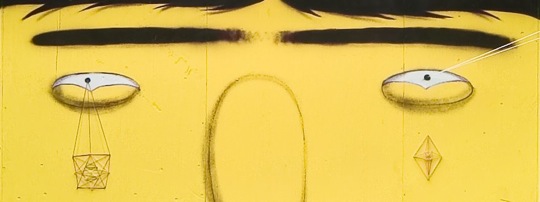Only about 2% of Vandalog’s readers are in Germany, but those 2% (and I suppose anybody else in the area between now and August) have the chance to see what promises to be one of the year’s best street art exhibits.
From May 16 to August 30th, the Reinking Collection is showing part of their street art collection at The Weserburg, a modern art museum in Bremen, Germany. Artists in the show include Banksy, Os Gêmeos, Zezão, and Shepard Fairey. Rik Reinking has one of the world’s best collections of street art, so I’m really excited to see a museum doing something so large scale with it.

The press for this exhibition is actually really interesting and worth reading even if you can’t make it down:
Urban Art is everywhere. Unsolicited, it leaves its traces and signs in urban space. It conquers public space with stickers, posters, extensive murals, and stencil graffiti. It’s galleries are the world’s streets. What began as graffiti in the large cities on America’s east coast forty years ago has since experienced a decisive development. Even if the majority of actions continue to be produced anonymously and illegally, it is no longer exclusively a phenomenon associated with youth culture. Many of the protagonists have emancipated themselves from the pictorial language of graffiti writing and experimented with new forms of expression. With their subtle and humorous, occasionally offensive interventions in the urban landscape they attempt to force open familiar visual habits. As a rule, they are not concerned with damaging the urban infrastructure but with participating in a dialogue with the public.
There is a variety of Urban Art. Temporary actions, unusual objects and sculptures, lettering, and characters are woven into the visual flow of the city as stumbling blocks. The possibility that many of the passers-by take no notice of these interventions is consciously taken into account. Thus they comprise a subversive counterweight to the constant presence of advertising, whose blinking images and seductive buying options dominate everyday life. It is not only in this respect that Urban Art is the expression of a critical examination of the social, cultural, and economic dimensions of the city, which in the age of globalization is rapidly and sustainably changing.Urban Art has recently experienced a downright hype. Numerous galleries and museums around the world have organized exhibitions, and works by the most well-known representatives of the genre have gained premium prices at auctions. What some accuse of being commercialization, the loss of authenticity, and the betrayal of original interests is viewed by many artists as a new chance. By transferring their themes and methods in the protected space of the museum, they develop very new and surprising approaches. But what kind of art is this that leaves its ancestral terrain? Do the works not require the city as a resonating space, as an immediate opponent? And is one of the essential features of Urban Art not its impermanence, its spontaneity? The Weserburg will be devoting itself to these questions in a large-scale exhibition centered around works from the Reinking Collection.
Via SlamxHype
